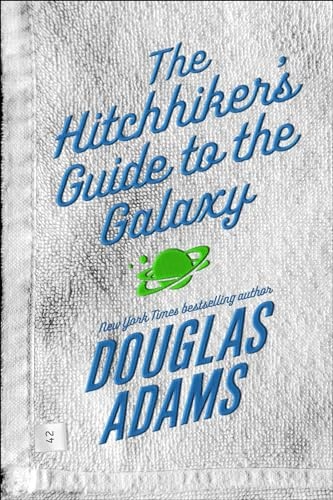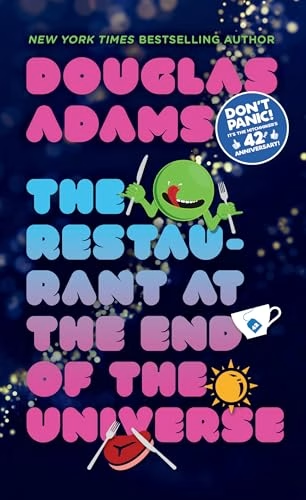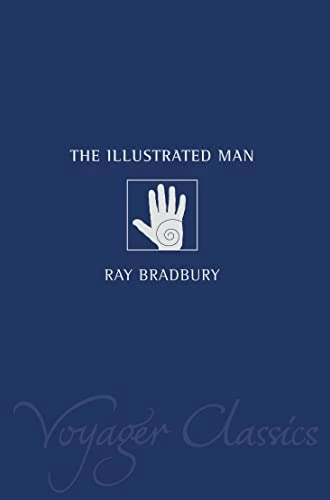Plot Summary
An Unlikely Escape
The story begins moments after the first book ends, with Arthur Dent, Ford Prefect, Zaphod Beeblebrox, and Trillian aboard the starship Heart of Gold. They are suddenly attacked by a Vogon ship, the same race that demolished Earth. The ship’s computer becomes completely unresponsive, as it is preoccupied with a complex task Arthur gave it: figuring out how to make a proper cup of tea. With the ship’s defenses failing and destruction imminent, Zaphod, acting on a strange prompting from the locked-off parts of his brain, decides to hold a seance to contact his great-grandfather, Zaphod Beeblebrox the Fourth.
The ghost of his great-grandfather appears, berating Zaphod for his lifestyle and lack of purpose. He reveals that Zaphod’s presidency and theft of the Heart of Gold were part of a larger, forgotten plan: to find the true ruler of the Universe. After a lengthy lecture, the ghost uses his spectral power to save the ship, causing it to jump an unknown distance through space and time. In the ensuing chaos, Zaphod and Marvin the Paranoid Android vanish from the ship, leaving Arthur, Ford, and Trillian alone on a dead vessel with a single, cryptic note from the Nutri-Matic machine: “Wait.”
The Quest for Zarniwoop
Zaphod and Marvin materialize in a pavement café on Ursa Minor Beta, home to the offices of The Hitchhiker’s Guide to the Galaxy. A pre-programmed thought in Zaphod’s mind compels him to find a man named Zarniwoop. He enters the Guide’s headquarters, a luxurious building, where a receptionist informs him that Zarniwoop is “on an intergalactic cruise” but is currently in his office. Zaphod, now accompanied by Marvin who has also inexplicably arrived, navigates a neurotic elevator and reaches the fifteenth floor.
Suddenly, the building is attacked by Frogstar Fighters. Zaphod is met by a man named Roosta, who reveals that Zarniwoop has orchestrated this entire scenario. The attackers uproot the entire office tower and transport it through space to Frogstar World B, “the most totally evil world in the Galaxy.” During the journey, Roosta explains that Zaphod is destined to be subjected to the Total Perspective Vortex, a device that shows a being their true place in the totality of creation, an experience that annihilates the soul.
The Total Perspective Vortex
Upon crash-landing, Roosta mysteriously disappears. Zaphod and Marvin descend the side of the wrecked building and are met by the disembodied voice of Gargravarr, the Custodian of the Vortex. Gargravarr, a mind separated from his body, explains the tragic history of Frogstar World B, a planet whose economy collapsed under the weight of too many shoe shops, leading its inhabitants to mutate into birds.
He leads Zaphod to the Vortex. Zaphod is placed inside and experiences a momentary glimpse of the entire infinite Universe, with a microscopic marker indicating, “You are here.” To Gargravarr’s astonishment, Zaphod emerges completely unharmed and with his ego powerfully reinforced. The Vortex, having shown him the whole of reality, confirmed what he already believed: that he, Zaphod Beeblebrox, was the most important person in the Universe. This is because he was, at that moment, in a universe created specifically for him by Zarniwoop.
Escaping into a derelict spaceship hangar, Zaphod discovers a 900-year-late cruise liner with its passengers in suspended animation. On the flight deck, he finally meets Zarniwoop. Zarniwoop reveals the truth: the entire sequence of events, from the attack on the Guide offices to the Total Perspective Vortex, took place within a sophisticated, electronically synthesized universe he created and kept in his pocket. The Heart of Gold had been with them the entire time, shrunken down to the size of a small metal object in Zaphod’s jacket. Zarniwoop restores the ship to its full size, and they escape the artificial reality just as Zaphod punches him.
Dinner at the End of Time
Zaphod orders the Heart of Gold computer to take them to the nearest place to eat. The ship is immediately disabled by an explosion, only to rematerialize at Milliways, the Restaurant at the End of the Universe. This five-star establishment is situated in a time bubble at the exact moment of the universe’s final collapse, offering dinner and a show for time-traveling patrons. Here, the group learns that Hotblack Desiato, the front man for the galaxy’s loudest rock band, Disaster Area, is spending a year dead for tax reasons. They are also introduced to the Dish of the Day, a sentient bovine creature that enthusiastically offers parts of its own body for their meal.
During the apocalyptic floor show, a phone call comes for Zaphod. It is Marvin, who they left behind on Frogstar World B. He has been waiting for them for 576 thousand million years, spending the time parking cars. They decide to rescue him and escape by stealing a ship from the parking lot. They discover a stunning, impossibly black ship that Zaphod falls in love with. It is Disaster Area’s stuntship, designed for a single flight: a suicidal dive into a sun as the climax of their concert.
Crash-Landing on Prehistoric Earth
The ship’s autopilot engages, sending them on an irreversible course back in time and into the sun of Kakrafoon. Trapped, they discover a faulty, half-installed teleport. With no other option, Ford and Zaphod frantically try to get it working. Marvin volunteers to stay behind and operate the controls, sacrificing himself as the ship plunges into the star.
Arthur and Ford materialize in the corridor of a massive, slow-moving spaceship. They soon discover it is the “B Ark” from the planet Golgafrincham, carrying the useless third of the population—middle managers, telephone sanitizers, and hairdressers—who were tricked into leaving their home planet under the false pretense of an impending cataclysm. The ship, on a preset course, crash-lands on a primitive planet. Arthur and Ford watch in dismay as the incompetent survivors begin forming committees, declaring war on uninhabited continents, and attempting to invent the wheel by arguing about what color it should be.
Journeying away from the Golgafrinchan settlement, they see the planet’s native ape-like inhabitants, who seem to be mysteriously dying out. After months of exploration, they travel north to a land of fjords. There, deep within a glacier, they discover a signature: the name “Slartibartfast” carved in giant letters. They realize with horror that this planet is not just any primitive world; it is Earth, two million years in the past. The Golgafrinchans are the true ancestors of the human race.
The Ultimate Question
Devastated, Arthur attempts to stimulate the primitive natives’ evolution by teaching them Scrabble, but they prove incapable of learning. Just as he is about to give up, one of the creatures arranges a set of letter tiles to spell out “Forty-Two.” Ford and Arthur realize that the Earth’s original inhabitants were part of the planetary computer designed to find the Ultimate Question, and the arrival of the Golgafrinchans has corrupted the program.
Ford theorizes that the Question might still be latent in Arthur’s subconscious, as he is a descendant of the Golgafrinchans but was also part of the final, completed program. In a moment of inspiration, Arthur pulls stone Scrabble letters randomly from a bag, allowing his subconscious to guide the selection. The letters spell out the Ultimate Question: “WHAT DO YOU GET IF YOU MULTIPLY SIX BY NINE?”
Realizing that the program was irretrievably flawed from the beginning, they accept the fundamental absurdity of the universe. Two Golgafrinchan girls approach them, and Arthur, feeling a sense of peace and resignation, throws his copy of The Hitchhiker’s Guide to the Galaxy into a river, ready to make a life on prehistoric Earth.
Characters
Arthur Dent
The perpetually bewildered human, Arthur’s journey in this book is one of gradual, cynical acceptance. Thrown from one absurd crisis to another, his initial panic gives way to a weary resignation. He is the story’s anchor of normality, constantly trying to apply logic to a universe that has none. His arc culminates in the discovery that his entire race is descended from a shipload of useless middlemen, and that the Ultimate Question is a nonsensical mathematical error. This final revelation breaks his attachment to finding meaning, leading him to discard the Guide and accept his strange new reality on prehistoric Earth.
Ford Prefect
The seasoned galactic hitchhiker and Arthur’s semi-loyal friend. While still a hedonist, Ford is more reactive in this story, often swept up in Zaphod’s chaotic plans. He serves as an occasional explainer of galactic phenomena but is just as often out of his depth. His past as a roving researcher for the Guide is a distant memory; he is now fully committed to a life of opportunism and survival. His discovery of Earth’s true history confirms his cynical worldview, but he adapts with characteristic pragmatism, finding a new life among the Golgafrinchans.
Zaphod Beeblebrox
The flashy, two-headed, three-armed ex-President of the Galaxy is the primary driver of the book’s first half. His journey is dictated by a mission he doesn’t consciously understand: to find the man who rules the Universe. This internal conflict—between his fun-loving persona and the serious purpose locked in his brain—defines his actions. Zaphod is supremely egotistical and impulsive, yet his bravado sees him through the Total Perspective Vortex. He is a character ruled by whim and desire, ultimately abandoning his grand quest in favor of stealing a cool-looking spaceship.
Marvin the Paranoid Android
Marvin’s chronic depression becomes a central element of the plot. His pessimism is a source of both comedy and pathos. He saves the group from a battle tank by talking it into suicide, showcasing the debilitating power of his worldview. His greatest moment comes from his greatest trial: waiting over 576 thousand million years in a parking lot. This experience does nothing to improve his mood, but it sets up his ultimate sacrifice, as he stays behind to operate the teleport controls, saving the others from certain death in a final, glumly heroic act.
Zarniwoop
The enigmatic editor from the Guide offices who masterminds Zaphod’s quest. Zarniwoop is a manipulative and smug intellectual, creating an entire artificial universe to safely conduct his search for the Universe’s ruler. He represents a kind of detached, arrogant intelligence that Adams frequently satirizes, believing he can control and understand the cosmos through sheer brainpower, only to be foiled by the sheer unpredictability of Zaphod and the universe itself.
Core Themes
The Futility of Searching for Meaning
The central quest to find the “Ultimate Question to the Ultimate Answer” is systematically deconstructed and revealed as absurd. The answer, 42, is known, but the long-awaited Question turns out to be “What do you get if you multiply six by nine?”. This mathematical error suggests the entire premise of a single, discoverable meaning to life is flawed. This theme is reinforced by the Ruler of the Universe, who actively avoids his role and questions the existence of anything beyond his immediate perception. The book argues that life is not a problem to be solved but a reality to be experienced, and the search for a grand purpose is a distraction.
The Absurdity of Bureaucracy and Middle Management
The Golgafrinchan B-Ark is a masterful satire of modern corporate and governmental structures. The entire third of the population deemed “useless”—consisting of telephone sanitizers, marketing executives, hairdressers, and management consultants—is tricked into colonizing a new world. On prehistoric Earth, they immediately replicate their old society’s follies: they form committees that achieve nothing, create a disastrous fiscal policy based on leaves, and declare war for no reason, all while failing to master basic survival skills like making fire. Adams uses this to critique the triumph of procedure and jargon over practical action and common sense.
The Subjectivity of Reality
The novel constantly plays with the idea that reality is not a fixed, objective truth. Zarniwoop creates a perfect, artificial universe in his office, indistinguishable from the real one. The Total Perspective Vortex, which should destroy anyone’s ego, only confirms Zaphod’s because he is in a universe designed for him. The Ruler of the Universe embodies this theme, suggesting that his “universe” is merely what his eyes and ears perceive, and everything else is just hearsay. The story suggests that what we experience as reality is a matter of perspective, and a sense of proportion is impossible in an infinite creation.
Plot devices
Satire
The entire novel is a vehicle for sharp satire aimed at various aspects of modern life. It critiques philosophy and the search for meaning through the flawed Ultimate Question; it lampoons consumerism and entertainment with the spectacle of the Restaurant at the End of the Universe; and it viciously parodies bureaucracy and corporate culture through the narrative of the Golgafrinchan colonists. Adams uses exaggeration and absurdity to expose the inherent ridiculousness of these human institutions.
Deus Ex Machina
The characters are frequently saved from impossible situations by sudden, improbable events. This is not lazy writing but a core component of the story’s logic, centered on the Infinite Improbability Drive. A seance with a ghost saves them from Vogons; a faulty teleport works just long enough to rescue them from a star; a universe-ending restaurant happens to be built on the very planet where Marvin has been waiting for millennia. These events reinforce the theme that the universe is chaotic, unpredictable, and not bound by conventional cause and effect.
The Hitchhiker’s Guide Entries
As in the first book, excerpts from the Guide itself are used as a narrative device. These entries interrupt the plot to provide witty, often inaccurate, and deeply cynical background information on planets, species, drinks, and concepts like time travel grammar. They serve as a tool for world-building, a source of standalone jokes, and a way for Adams to directly inject his satirical voice into the story, breaking the fourth wall and framing the narrative as just one small part of a much larger, stranger universe.





